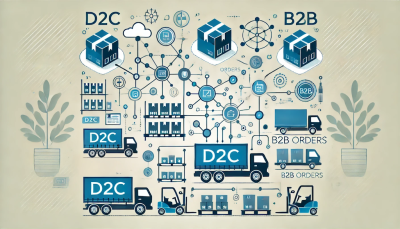In the simplest terms, the formula for calculating total manufacturing costs is:
Direct Materials + Direct Labor + Manufacturing Overhead = Total Manufacturing Costs
While this is how to calculate total manufacturing costs, there is a lot more that goes into getting an accurate number. According to a Harvard study, overhead costs rank as one of the biggest concerns of manufacturing executives.
The better control you have of your costs, the more profitable your business will be. We’ll walk through the process, giving our best tips for calculating and reducing manufacturing costs.
What are Total Manufacturing Costs?
The total cost of manufacturing takes into account any expense related to:
- Direct Materials: These are any raw materials for creating the finished product.
- Direct Labor: This includes all individuals that contribute to preparation, assembly, and manufacturing.
- Overhead: These are expenses incurred from the equipment, maintenance. It also includes any indirect materials or labor that supports production.
Some of these costs will be obvious and direct, while other expenses will be indirect from different departments contributing to production. To calculate all the various expenses, you’ll want to analyze how each department contributes to the production and articulate a detailed list of each cost.
Direct Vs. Indirect Manufacturing Costs?
Both direct and indirect costs factor into your total manufacturing costs. Direct costs are a lot easier to identify and quantify than indirect costs because indirect costs are often supportive of the production. However, for manufacturing costs, you don’t need to calculate:
- Administrative costs
- Rental fees
- Utilities
- Office supplies
- Building depreciation
Direct costs are generally variable costs that can be tracked to a specific person or thing, like raw materials, commissions, supplies, and labor.
Indirect costs are usually fixed costs like building lease, insurance, production supervisor salaries, or quality control costs.
How to Calculate Direct Material Costs
Direct materials or the inventory you use to produce the finished product and can include:
- Raw materials
- Components
- Parts
To calculate your direct materials costs, you’ll want to use the following formula:
Beginning Direct Materials + Direct Materials Purchased – Ending Direct Materials = Total Direct Material Costs
To do this, you want to use the value of direct materials you have in inventory at the beginning of the period and then add the cost of any direct materials purchased. Then you’ll need to subtract the value of the direct materials at the end of the period to get your total. This needs to be recalculated every period because of the variable nature of direct costs.
How to Reduce Direct Material Costs
Your direct material costs are generally a significant manufacturing expense. Because direct materials are a variable cost, you’ll want to reduce these costs as much as possible while not sacrificing too much on quality. You can reduce your direct materials costs by:
- Selecting lower-cost materials.
- Finding alternate suppliers who offer better pricing for the materials you need.
- Reducing shipping costs by buying in bulk or from a local vendor.
- Managing your production workflow for inefficiencies and bottlenecks to reduce waste and overproduction.
- Evaluating your supply chain for better pricing and discounts from suppliers.
- Building and managing supply chain relationships for better delivery and service level agreements.
Want an inventory management system that offers more than tracking inventory? Sign up for a free trial of our advanced inventory operations platform.
Related Link: Manufacturing on the Rise: The Strength of US Domestic Production and Its Future

How to Calculate Direct Labor Costs
Direct labor costs include wages, benefits, PTO, workers compensation insurance, and other entitlements offered to the employees who work directly with production. This can be for:
- Assembly line employees
- Machine operators
- Processing team members
- Quality assurance inspectors
- Shipping and delivery employees
To calculate the direct labor costs for each department, you’ll need to:
- Calculate the direct hourly labor rate. This formula is the hourly rate + any payroll taxes + benefit costs. Then divide that number by the number of hours worked during the pay period.
- Calculate direct labor hours per product unit. The formula is product units / labor hours.
- Determine the direct labor cost by multiplying the direct labor hourly rate by the direct labor hours.
This will give you a labor cost per product unit. If your labor productivity has been declining, it seems to be an industry norm. Labor productivity has declined in 18 of 21 manufacturing industries, which affects labor costs.
Related Link: Tips for Finding the Right Co-Packer for Your Business
What Is Manufacturing Overhead?
Manufacturing overhead is all of the costs of maintaining and purchasing production equipment. Overhead also includes any indirect materials or labor involved with production.
How to Calculate Manufacturing Overhead
To calculate the manufacturing overhead, you’ll need to identify any costs that can be considered overhead. Once you have all your expenses, you can use this formula:
Overhead Costs / Sales x 100 = Manufacturing Overhead Rate
The lower your rate, the more efficient your operations are running. As a manufacturing executive, you’ll want to look for any way to lower your overhead because it directly affects revenue and production costs.

How to Calculate Total Manufacturing Cost?
Now you’re ready to calculate your total manufacturing cost using the formula we mentioned above:
Direct Materials + Direct Labor + Manufacturing Overhead = Total Manufacturing Cost
You’ll want to accurately and honestly calculate the total cost for a more accurate assessment of your operations.
Final Thoughts
When you know your total manufacturing costs, you’ll be able to make better decisions about improving operations, determining better price points, or negotiating better deals with suppliers, distribution channels, and sales.
The more ways you find to reduce your total costs, the more profitable your business will become. You may want to consider using third-party technology and tools to reduce direct material and labor costs.
Here at Fiddle we offer a wide variety of production management tools to reduce manufacturing costs and improve efficiency. Our Modern, easy-to-use system integrates well with existing systems for a seamless transition and improved productivity management.
Check out Fiddle’s tiered pricing model and start your free trial today!
Related Link: How to Avoid the Most Common Inventory Blunders










